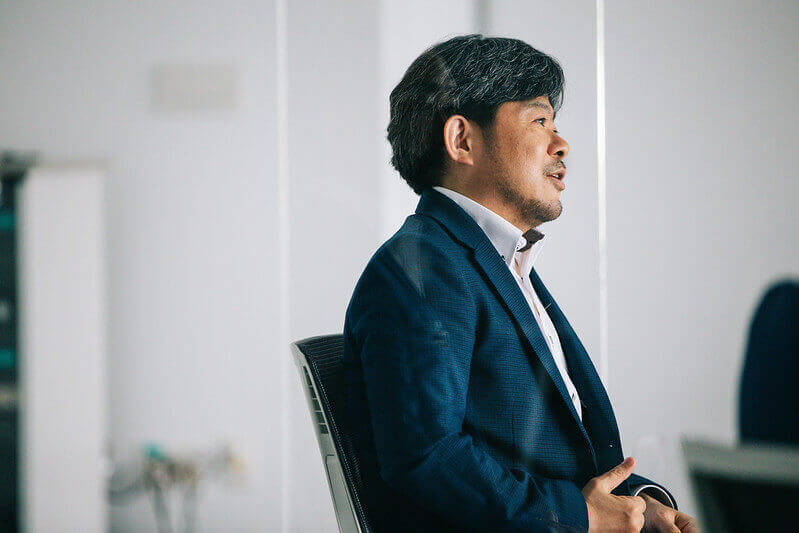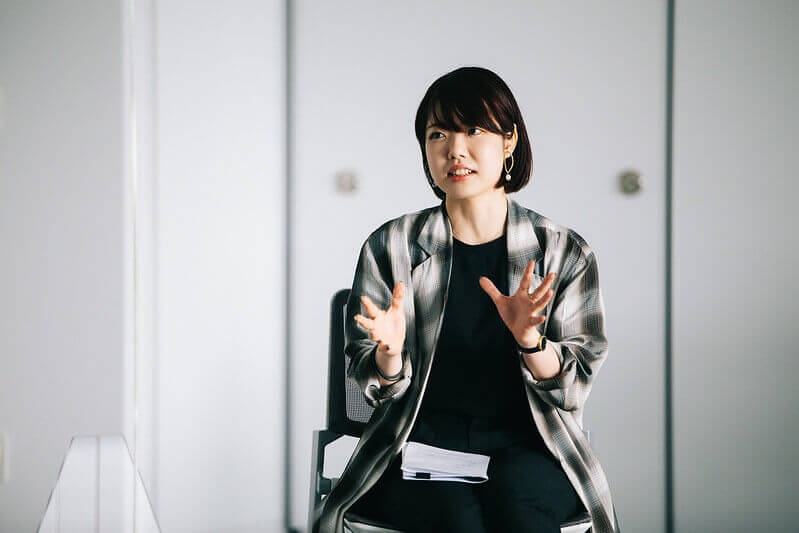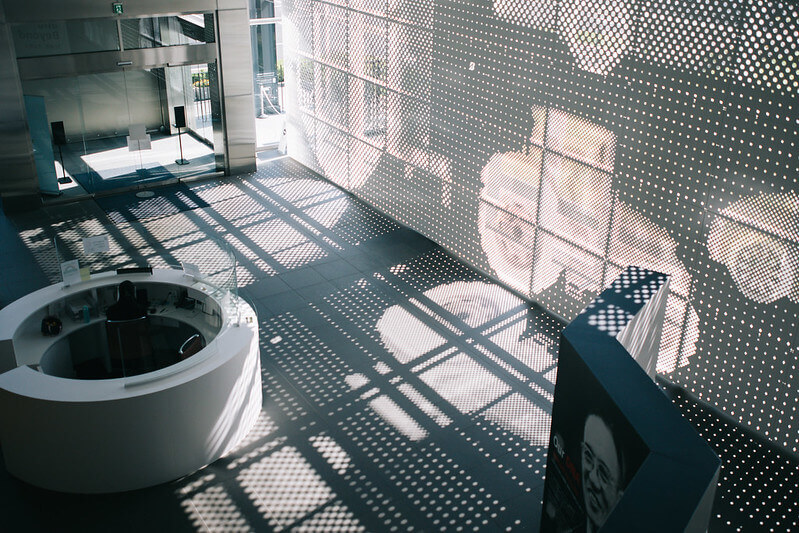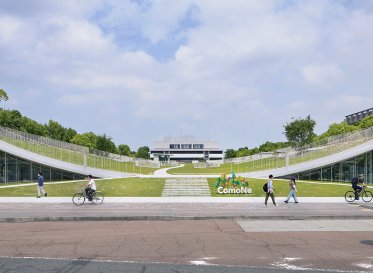
Design-Driven Innovation Helps
Bridgestone Explore the Future
Japanese multinational Bridgestone Corporation may be one of the world’s largest tire manufacturers, but rather than resting on its laurels, it is already looking to the future.
In February 2021, the household name in auto parts announced plans to explore soft robotics in its bid to move towards ‘exploratory business’ – or, new business fields – in the next ten years.
Drawing upon its expertise in the research and development of rubber materials, the company has been developing ‘rubber actuators’ – something that is currently making waves in the soft robotics field. Derived from technology used in tires and hydraulic hoses, these materials will allow us to realize a future in which we are actively supported by ‘artificial muscles’.
Bridgestone’s Future Exploration Team worked alongside Loftwork to explore the uses of rubber actuators in society ten years from now. Just what are the perspectives and processes needed to find meaning and social value in products that do not yet exist?
We speak to the Bridgestone project team to find out how a design-driven approach can help companies explore the future.
Back to Basics: Connecting to People's Lives

Tire sales are the backbone of Bridgestone, accounting for 85% of sales. However, to move towards its vision of becoming a ‘solutions’ company by 2050, the company has set its eyes on finding and creating new businesses – like the commercialization of Bridgestone rubber actuators.
Though the project was launched in June 2020, rubber actuators themselves are not a new technology, having been developed since the 1980s. However, commercialization of the technology at the time had been largely unsuccessful.
According to Norikazu Otoyama, Bridgestone Exploration Business Development General Manager, rubber actuator technology came back into the spotlight with a little inspiration from ‘people’. With one of Bridgestone’s key missions being mobility, Otoyama says the company was already focusing on projects related to the environment. Since the founder of the company had always placed importance on ‘being close to people’s lives’, Otoyama turned his attention to what rubber actuators could do for people.
Unlike ‘hard’ robots, which are generally associated with simple tasks in pursuit of power, speed and accuracy, moving only for productivity, ‘soft’ robots with Bridgestone’s rubber actuator technology could make room for more complex, human-robot collaboration.

With regards to new business development, Otoyama believes the company side, including top-level managers, doesn’t necessarily have all the answers.
“Customers, however, have the answers,” he says, noting that businesses can become more aware of what is needed for society and industry when hearing real voices from customers.
Creating Social Impact through Business Development
Alongside a focus on creating customer value, Bridgestone has also been serious about its commitment to sustainability and its plans to address social and environment challenges. A big part of this will be centered around what the company calls ‘Exploratory Business’.
Broadly speaking, Bridgestone’s ‘Exploratory Business’ refers to new businesses it is actively seeking to develop in the next three years (2021-2023) – like recycling and soft robotics.

“The term is quite rare, isn’t it?” says Soft Robotics Business Development executive Masahiro Yamaguchi, adding that ‘area of exploration’ is his favorite term in English. “When a large company is thinking about venturing into a new field, one should think about it on a scale that can provide a solution to the world. In this way, soft robotics was perfect for us.”
Otoyama agrees: “To start a new business in a large company, it is not enough to simply say, ‘I want to do it.’ You also need to think about the contribution to society as an industry and the meaning of what you are doing.”
Ask ‘Why’ (and Have Clear Answers)
To commercialize soft robotics, several teams were formed – including the ‘Future Exploration’ group, with whom Loftwork was engaged to collaborate. Bridgestone was able to benefit from not only our expertise in materials (through our materials design and innovation platform MTRL), but also our background in design-driven innovation.
Popularized by Roberto Verganti (Design Driven Innovation: Changing the Rules of Competition by Radically Innovating What Things Mean), a design-driven approach that advocates asking ‘why’ people use things, rather than ‘how’ – allowing the researchers, developers and planners involved to exercise critical thinking.

According to Loftwork Creative Director Emi Nagashima, a big component of the project was designed around the ‘why’. “The project members themselves should be able to clearly answer the questions of ‘Why is Bridgestone doing this and not some other company?’ and ‘Why is this needed by society?’” she says. “I designed the project based on the belief that it would be difficult to maintain motivation and pass approval for a new project unless the members were clear about why they were doing it.”
Nagashima is adamant that one has to be realistic when exploring big ideas, and explore the nexus between industry, existing needs and the characteristics of the materials at hand.
“It’s meaningless to just say, ‘It would be nice if there were such a thing.’” Yamaguchi adds. “With the direction of Loftwork, we thought about what would be meaningful to the world, with a sense of reality.”
‘Exploratory Business’ Is Impossible Without Co-Creation
While it’s unreasonable to expect ideas from a three-month project to suddenly lead to commercialization, the process itself can be more important than the end result. According to Otoyama, soft robotics, at least in action, had seemed worlds away before the project began. However, it has since changed his way of thinking, especially as he began to see the community of soft robotics expanding during Bridgestone’s collaboration with Loftwork.
“An ‘Exploratory’ project is impossible without co-creation, so the relationships that were created here will be useful in the future,” he says.
For Yamaguchi, business models that end with the creation of a product are not meaningful as new businesses: “I would like to develop our business with a co-creation approach, thinking about how the world will change, who we can work with, and what kind of value we can create.”

Though Bridgestone has, up until now, been mostly self-supporting, Otoyama says the team is looking forward to actively collaborating with academia, start-ups and other corporations and partners. This is in line with the company’s current plans for the Bridgestone Innovation Park, a new global campus on the company’s former R&D site. The establishment of the park will see the arrival of an innovation center (B-Innovation) and the Open Innovation Hub, a base for future co-creation activities and projects.
“Our theme for the future is to support the movement of people,” says Otoyama. “We would like to expand those possibilities, using soft robotics with various co-creation partners.”









